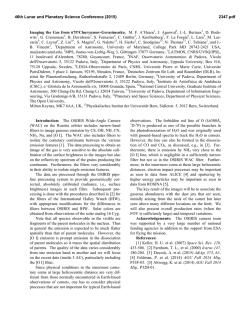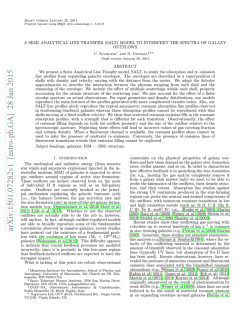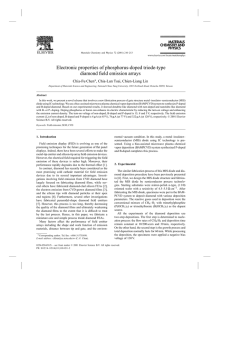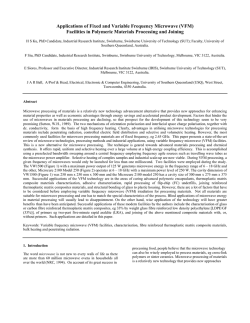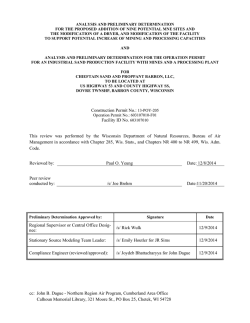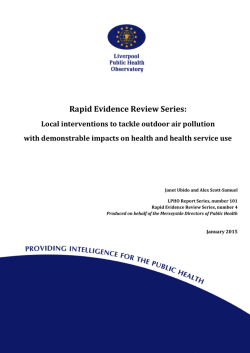
Diapositiva 1
Constraining the non-thermal emission from young stars in Orion Víctor M. Rivilla1, Jan Forbrich2 , Claire J. Chandler3, and Jesús Martín-Pintado4 1 Osservatorio Astrofisico di Arcetri, Italy, 2 University of Vienna, Austria, 3 National Radio Astronomy Observatory, 4 Centro de Astrobiología (CSIC-INTA), Torrejón de Ardoz, Madrid, Spain ● Young stars are expected to produce highly-variable (flaring) non-thermal emission related with magnetic events. ● However, the physics and geometry associated with non-thermal cm/(sub)mm emission from young stars are still poorly constrained. SCIENTIFIC BACKGROUND 1.4 cm (22 GHz) ● LONG-TERM VARIABILITY (timescales months to years) have been detected in cm monitorings (2-6 cm; Felli+93, Zapata+04). 3 mm (90 GHz) ORBS ● Only a few serendipitously detected impressive flares with SHORT TERM VARIABILITY on timescales of hours to days have been reported. 3 mm (86 GHz) V773 Tau A GMR A Forbrich+08 (VLA) Massi+06 (PdB) Bower+03 (BIMA) ARE THEY RARE EVENTS? OR WERE WE LIMITED BY SENSITIVITY? NEW MONITORING OF ORION AT 7 & 9 mm (Rivilla et al., submitted) 9 mm flux density curves ● VLA observations of 19 sources in Orion reveal that variability (in timescales down to hours) is very common. NEW RADIO DETECTION OHC-E INCREASE OF SENSITIVITY WITH NEW VLA COMPARISON WITH X-RAYS ● The non-thermal emission is expected to arise from the same magnetic reconnection events that produce X-ray emission. ● VLA and ALMA are capable now to significantly increase the number of cm/(sub)mm detections of flares from young stars. Orion Nebula Cluster and Orion Molecular Cloud Zapata+04 Old VLA 3.6 cm ● The cross-correlation between radio and X-ray stars show that the radio detections correspond with the brighter X-ray stars. Detections at cm/sub(mm) wavelengths have been STRONGLY LIMITED BY SENSITIVITY ~ 60 sources Forbrich & Rivilla, in prep. New VLA 4-6 cm ~ 500 sources !! NEXT STEP: GO TO ALMA + mm-VLBI OBSERVATIONS (3,2,1 mm) ● ALMA observations to obtain a complete catalogue of young stars with mm emission. ● Selection of the best potential sources to study in detail with mm-VLBI. Feigelson & Montmerle (1999) NEED OF VLBI TO DISENTANGLE THE GEOMETRY Only mm-VLBI (including ALMA) provides the needed sensitivity and spatial resolution to resolve the small-scales (<0.1 AU; << 1 mas) of magnetic loops involving the central star and the circumstellar disk. ADDITIONAL IMPLICATIONS: high energy irradiation of protoplanetary disks, impact on planet formation, improvement of previous derivations of parallax distances, effects on interferometric imaging techniques...
© Copyright 2025

